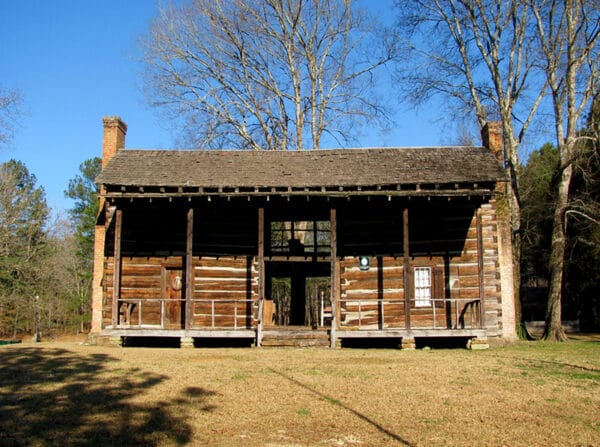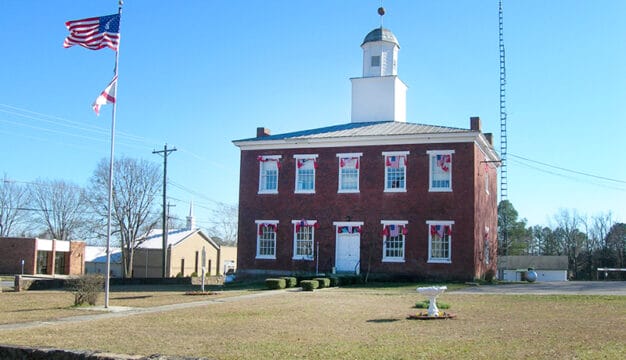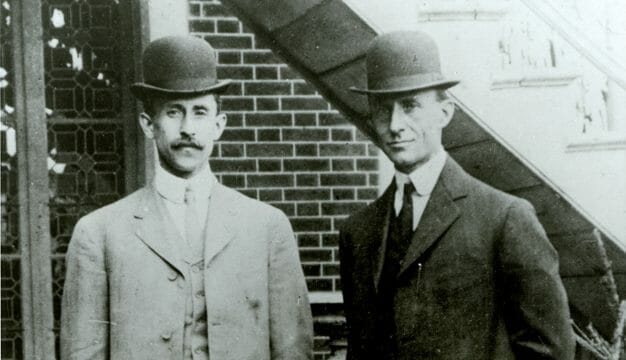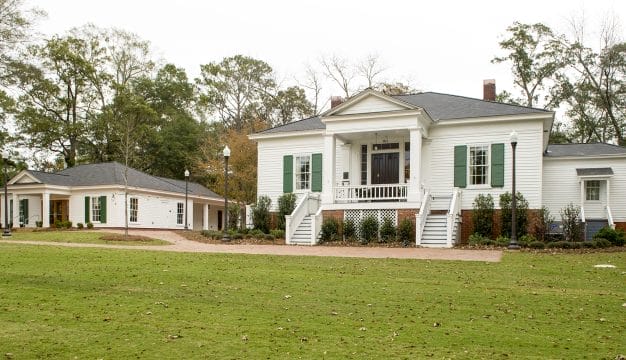Ashville
Ashville is one of two county seats in St. Clair County, the other being Pell City; it is located in north-central Alabama. It has a mayor/city council form of government.
History
 St. Clair Courthouse
Ashville was originally called St. Clairsville but was renamed in honor of John Ash, the first white settler in the area. He arrived in the area in 1817 and was the county’s first elected judge and also served as a state senator. His log home still stands in the city’s center. Philip Coleman originally owned the land on which the town stands, but he sold 30 acres of it to the five commissioners, including Ash, who had been appointed by Gov. Thomas Bibb to establish and lay out a new county seat. The town was incorporated in 1822. The first courthouse, also a log structure, was built two years later. It was replaced in 1844 with the current courthouse building.
St. Clair Courthouse
Ashville was originally called St. Clairsville but was renamed in honor of John Ash, the first white settler in the area. He arrived in the area in 1817 and was the county’s first elected judge and also served as a state senator. His log home still stands in the city’s center. Philip Coleman originally owned the land on which the town stands, but he sold 30 acres of it to the five commissioners, including Ash, who had been appointed by Gov. Thomas Bibb to establish and lay out a new county seat. The town was incorporated in 1822. The first courthouse, also a log structure, was built two years later. It was replaced in 1844 with the current courthouse building.
In 1890, a group of investors, the Ashville Railroad Company, built a railroad line from Ashville to Whitney, connecting to the Alabama Great Southern Railroad. However, the group went bankrupt during the mid-1890s, and the tracks were dismantled and sold for scrap. Electric lights came to Ashville in 1891, and the first telephone company was chartered in the same year. Residents in the southern half of the county often complained of the difficulty of traveling to Ashville over Backbone Mountain, which divides the county, so in 1902 a satellite county seat was established in Pell City on the southern side of the mountain.
Demographics
According to the 2020 Census estimates, Ashville’s population was 2,309. Of that number, 69.8 percent of respondents identified themselves as white, 26.8 percent as African American, 2.9 percent as American Indian, and 2.3 percent as Hispanic, and 0.1 percent as two or more races. The city’s median household income was $49,048 and the per capita income was $21,078.
Employment
According to 2020 Census estimates, the workforce in Ashville was divided among the following industrial categories:
- Manufacturing (24.6 percent)
- Educational services, and health care and social assistance (18.6 percent)
- Retail trade (14.2 percent)
- Arts, entertainment, recreation, and accommodation and food services (9.1 percent)
- Other services, except public administration (7.1 percent)
- Construction (6.5 percent)
- Professional, scientific, management, and administrative and waste management services (5.2 percent)
- Information (4.9 percent)
- Transportation and warehousing and utilities (4.6 percent)
- Finance, insurance, and real estate, rental, and leasing (1.9 percent)
- Public administration (1.9 percent)
- Wholesale trade (1.3 percent)
Education
Schools in Ashville are part of the St. Clair County School District; the city has five public schools (elementary, middle, high, vocational, and an alternative school). It also has one private school serving K-12.
Transportation
Ashville is intersected by U.S. Highways 231 and 411 and is located only about 2 miles south of Interstate 59. It also is served by the Dugger’s Field Airport and the Golden Pond Airport.
Events and Places of Interest
 John Looney House
The Ashville Sports Complex has softball and baseball fields and active youth and adult leagues. The John Looney Pioneer House Museum, a popular historic site, may be the oldest dogtrot log house in the state; it was heavily damaged by fire in August 2022 and remains closed to the public. The historic St. Clair County Courthouse is the oldest operating courthouse in the state and is the centerpiece of the Ashville Historic District.
John Looney House
The Ashville Sports Complex has softball and baseball fields and active youth and adult leagues. The John Looney Pioneer House Museum, a popular historic site, may be the oldest dogtrot log house in the state; it was heavily damaged by fire in August 2022 and remains closed to the public. The historic St. Clair County Courthouse is the oldest operating courthouse in the state and is the centerpiece of the Ashville Historic District.
The Old Ashville Masonic Lodge and Mattie Lou Teague Crow Museum is located in the town’s historic district and features artifacts dealing with the history of St. Clair County. The John W. Inzer Museum, originally the home of Confederate officer and district judge John Inzer, is a Greek revival home built in 1852 that houses Inzer’s papers and memorabilia.
Further Reading
- Crow, Mattie Lou Teague. History of St. Clair County (Alabama). Huntsville, Ala.: Strode Publishers, 1973.
- The Heritage of St. Clair County, Alabama. Clanton, Ala.: Heritage Publishing Consultants, 1998.



